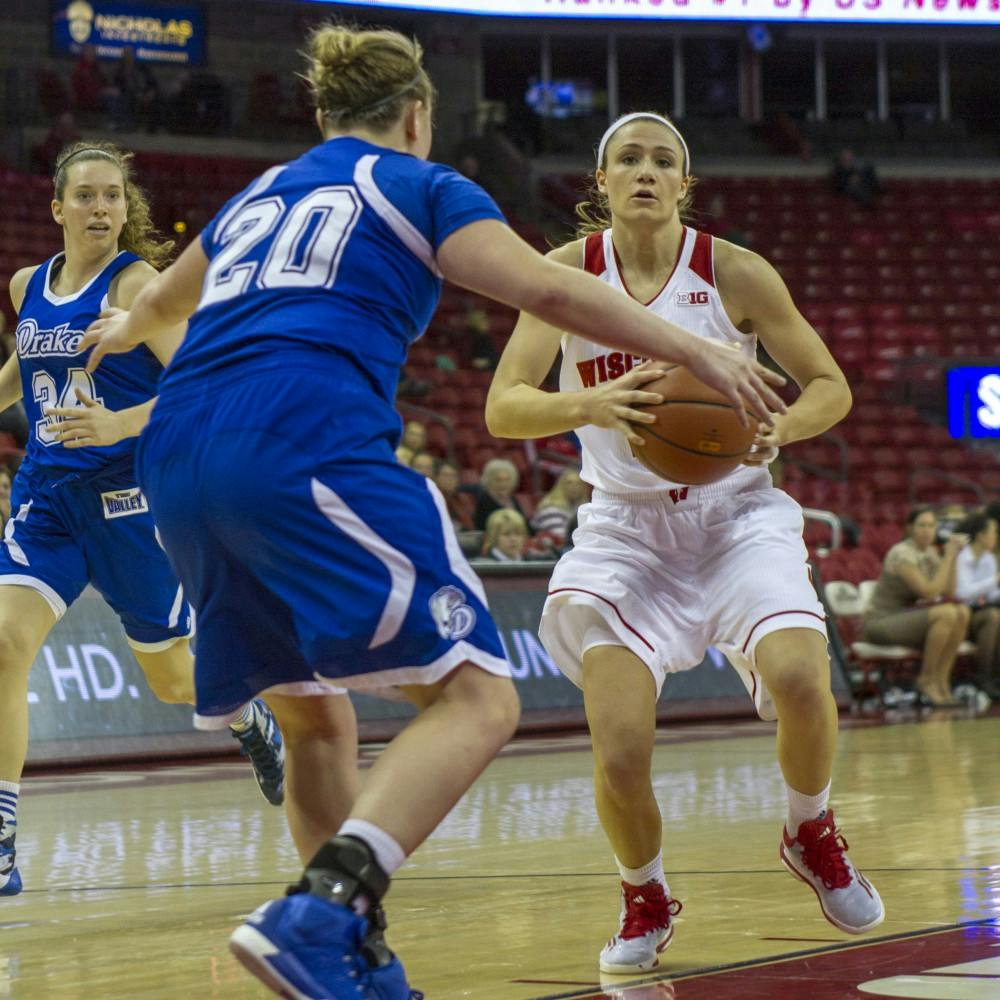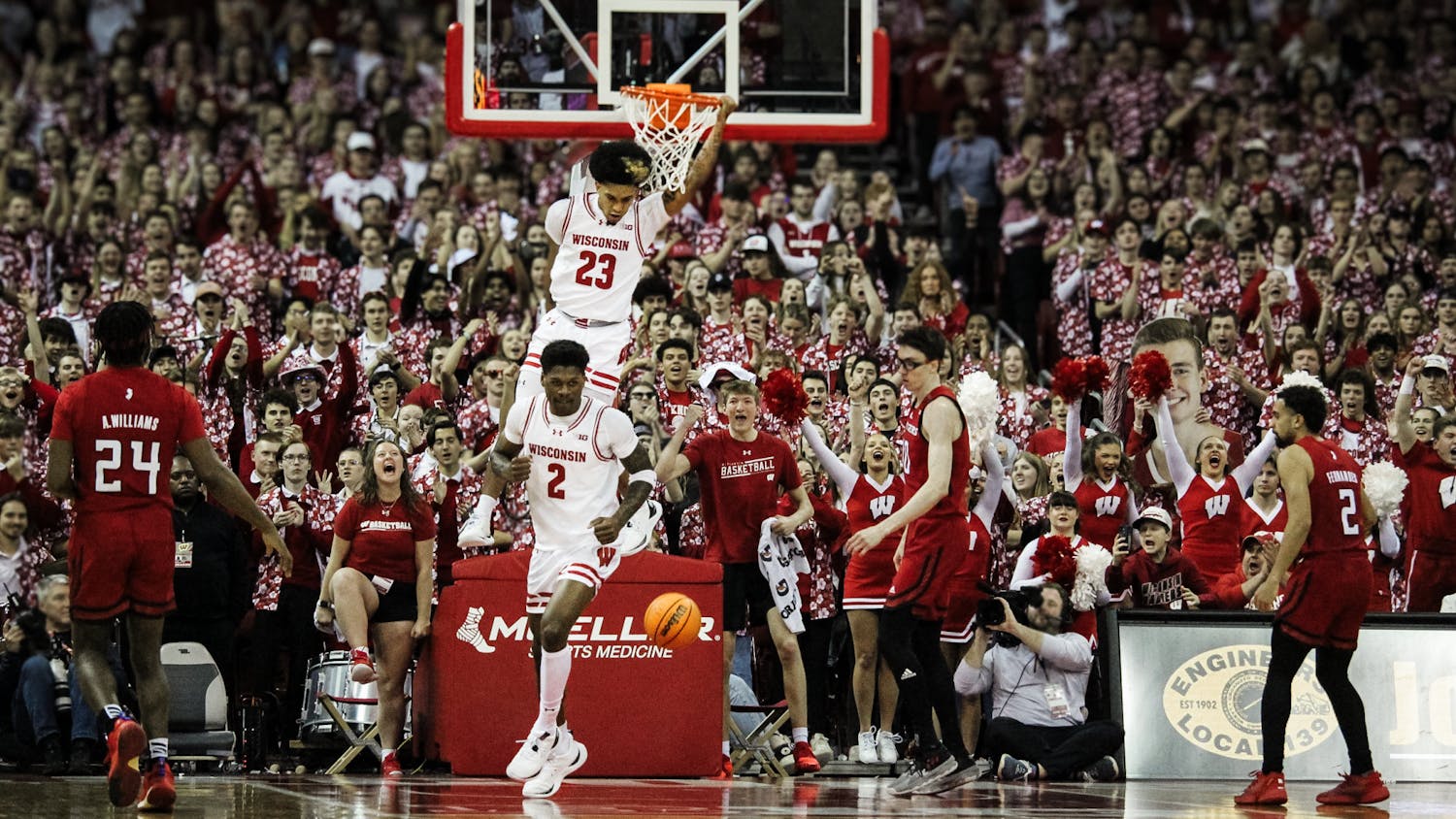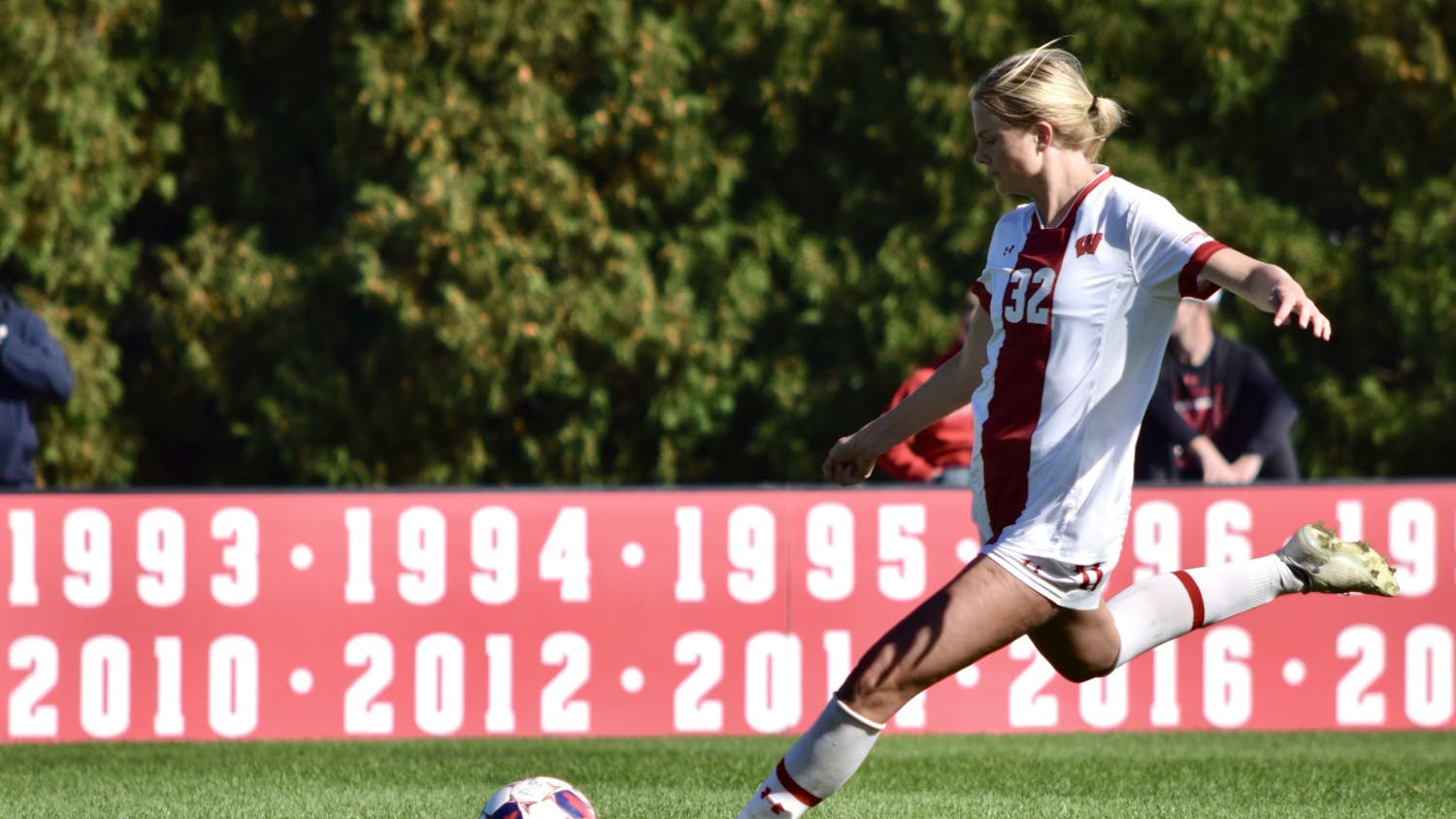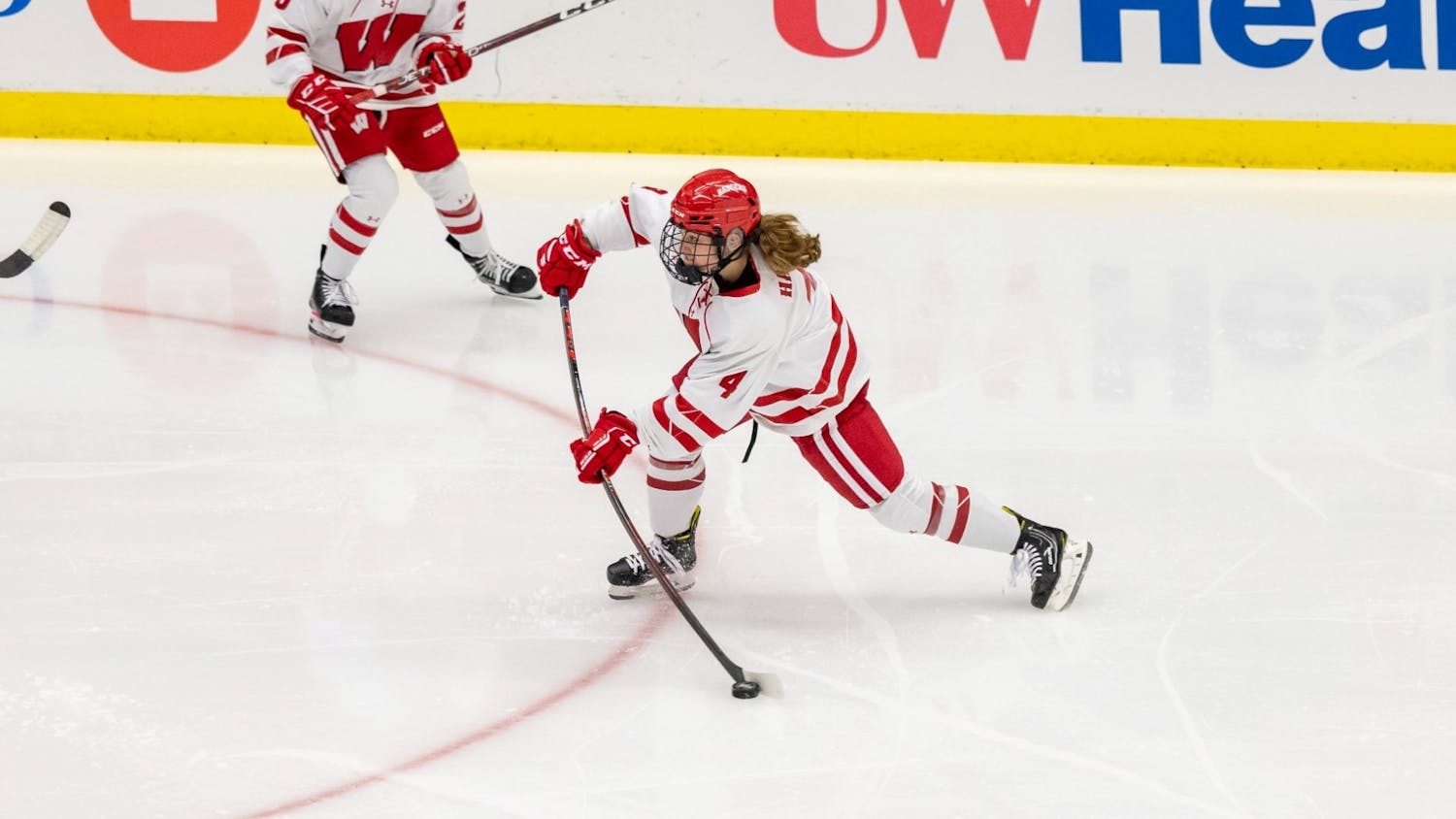For two years at Syracuse University, former Orange and current Wisconsin assistant coach and recruiting coordinator Sasha Palmer spent every day studying one of the most effective and dangerous defenses in college basketball.
Whether watching the Syracuse men’s team from her glass-windowed office overlooking the practice floor at the Carmelo Anthony Center, or coaching the Syracuse women down on the floor itself, Palmer was soaking in all she could learn about Syracuse’s famous 2-3 zone.
This offseason, Palmer, a Watertown, Wis., native, has returned back to her home state, joining the Badgers’ (3-10 Big Ten, 7-16 overall) bench and bringing one of the most lethal weapons in college basketball to the Midwest with her.
Palmer and head coach Bobbie Kelsey both recognize that a lot of teams play a basic 2-3 zone, but Syracuse’s zone is a little bit different than everyone else’s. Kelsey, though, wasn’t as knowledgeable about the various wrinkles in the Orange zone, which is why the 2-3 was one of the first things discussed between Palmer and Kelsey when, as Palmer said herself, she agreed “to come home.”
“We talked about it when she wanted me to come here and I was looking at this place,” Palmer said. “She wanted me to put that in, because she said that was one of her weakness, that she wasn’t familiar with the zone as much. And it’s all we did [at Syracuse].”
And when Palmer arrived in Madison, it became evident to her that it was not only a weakness of Kelsey, but also of her players.
“We practiced it a little bit, but not as much,” senior guard Nicole Bauman said. “We practice it a lot more this year, and with coach Sasha, she really implemented it because she came from Syracuse. So just having her expertise with the zone to teach us, helped us a lot more when we were learning it and executing it on the floor.”
And even for a quick and perceptive learner like Bauman, learning the nuances of the 2-3 was difficult.
Bauman, listed at only 5-foot-10, has not only had to learn the principles of playing at the top of the zone, but also the bottom, something she admitted is a little more uncomfortable.
For the record, Kelsey was a bit more secretive about what separates the Badgers’ newest defensive set, but Palmer, the expert, was a little more revealing.
The Badgers play a little higher than most teams in the 2-3 zone. The center comes up to the free throw line a bit more often. They trap the basketball more frequently out of the short corner. And they try to deny passes to the corner, which is something that Bauman admitted was one of the most difficult parts of learning the new defense.
Watch in the two clips above as junior power forward Avyanna Young tries to jump the pass to the corner. In the first clip against Maryland back in mid-January, the Terrapins’ quick and decisive ball movement allows All-American Shatori Walker-Kimbrough to catch a swift chest pass and attack the rim before Young scurries out to deny the pass. But in the second clip coming from this past week, Purdue guard April Wilson holds the ball as Young does a better job guarding both Wilson and the Boilermaker in the corner. Young doesn’t run out toward the perimeter as much against Purdue, and as a result of her equidistant placement between both Boilermaker players, she is in better defensive position.
To paraphrase Kelsey’s remarks after her team lost to Nebraska in mid-January, you don’t get better by taking a nap, you need to get your butt in the gym. And for a team defense like the 2-3 zone, that means practicing it over and over again, day after day.
“We practice it every single day for at least 10 minutes now,” Palmer said. “They just understand it better. They know where they’re supposed to be. A lot of times early on, they would go into a different area they’re not supposed to be, that’s not your area. We’re a zone. It’s a team defense.”
And as the season progressed, one of the Badgers’ biggest improvements has been their collective play as a five-player unit.
“Definitely our communication has improved the most. Just talking knowing where everyone is,” Bauman said. “And one of the biggest things is when their cutter is on the baseline, you have to let the other forwards know that someone’s coming, because they’re people behind you and you don’t know if someone is coming unless there is someone behind you that tells you there are.”
Notice when Purdue has the ball on the perimeter, how toward the bottom of the screen a Purdue wing player tries to use a back screen to cut backdoor against the Wisconsin zone. Senior guard Tessa Cichy, 22, doesn’t see the screen coming, but, lucky for her, senior center Michala Johnson, 25, notices the cutting Purdue player from her spot in the middle of the defense, and acts accordingly. Johnson points out the cutter, anticipates the backdoor pass and breaks it up.
That’s a prime example of the communication and added awareness that Bauman was referring to. And the coaching staff is noticing it as well.
“I think they’re just trusting each other more and trusting themselves in it,” Palmer said.
Like any good 2-3 zone, the Badgers want to eliminate outside shots and stop dribble penetration. When a team gets into the heart of the zone, it creates a ton of problems for the defense. Some of that onus is on the guards who need to rotate as one unit when the ball moves around the perimeter. But a big part of the defense, according to Palmer, is getting “our forwards to know where and how to go.”
The Badgers have started a few games in the 2-3 three zone, but more often than not switched into it for three or four possession spurts midway through games.
“[Kelsey will] ask, do you think we can? And in the beginning I would say no, because we didn’t understand it,” Palmer said.
But as the season has progressed, the Badger staff has become more comfortable with the 2-3. Compound that with the fact that they don’t match up with everybody in man defense perfectly and, as Palmer says, “sometimes you have to zone it.”
Palmer is also the recruiting coordinator for the Badgers, meaning she is heavily involved in bringing young talent to Madison. And for the Badgers to fully become Syracuse-Midwest, Palmer recognizes they need to bring in a lot more talent.
“That was our staple though, that’s what we were. We’re Syracuse zone. That was our identity. At Syracuse all we did was press and get back in the zone. We pressed the entire game, in your face pressure,” Palmer said. “I would like to press, but we gotta’ get the players, that play off the bounce and fit that identity.”
Eventually Palmer hopes the Badgers will put in a zone-press similar to Syracuse’s. But the Badgers’ currently lack the amount of depth needed to pressure the ball for the duration of a game.
Palmer, who is referred to by many people around the team as the zone guru, is even learning things about the 2-3 herself.
“I still am friends with the Syracuse men’s staff and I call them and ask questions, ‘Hey what do we do on this?’ she said. “Or I call my old boss, like probably every day, they’re probably really annoyed with me and say, ‘So what do we do here, what happens with this?’ But I’m still learning.”
As Kelsey said after her team’s 75-62 loss to Nebraska, referring to how players can improve their offense, “there’s no magic formula. There’s no secret potion you rub on your hands.”
But on defense the Badgers actually have a magic formula and a secret potion: their 2-3 zone.






